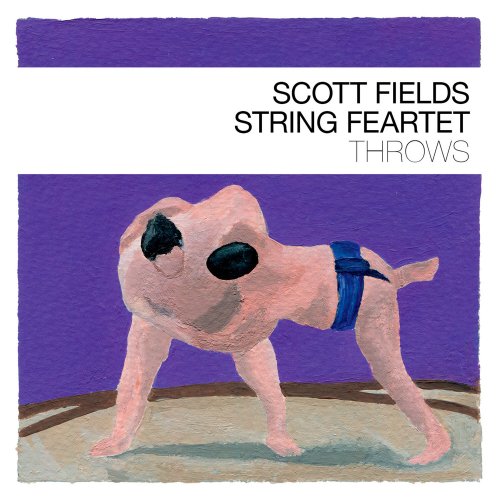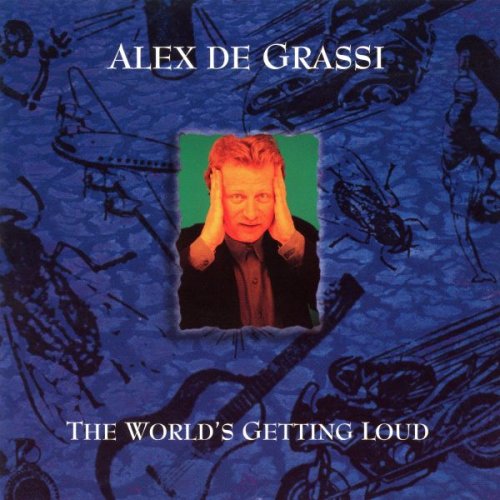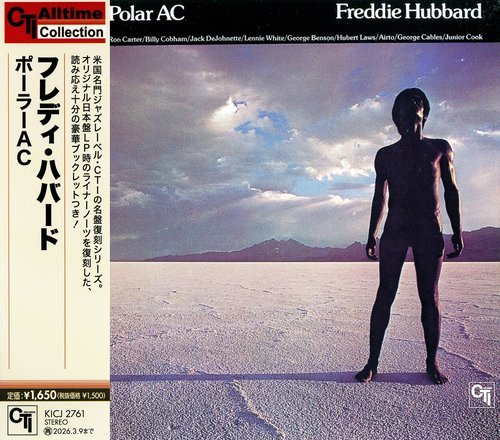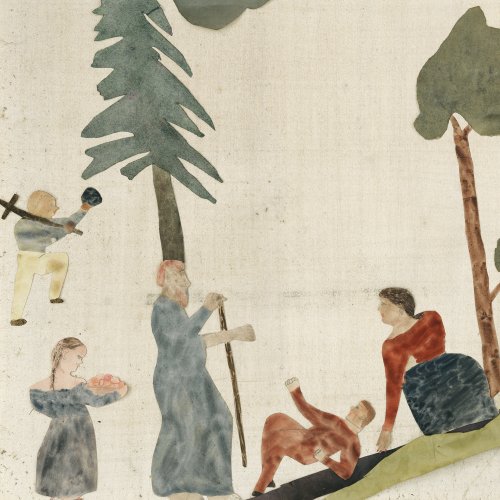Scott Fields String Feartet - Throws (2024) [Hi-Res]

Artist: Scott Fields String Feartet, Scott Fields, Carolin Pook, Axel Porath, Nathan Bontrager
Title: Throws
Year Of Release: 2024
Label: Between the Lines
Genre: Jazz
Quality: FLAC (tracks) [44.1kHz/24bit]
Total Time: 1:17:25
Total Size: 756 / 366 MB
WebSite: Album Preview
Tracklist:Title: Throws
Year Of Release: 2024
Label: Between the Lines
Genre: Jazz
Quality: FLAC (tracks) [44.1kHz/24bit]
Total Time: 1:17:25
Total Size: 756 / 366 MB
WebSite: Album Preview
1. Sukuinage (20:33)
2. Kotenage (13:21)
3. Yaguranage (13:18)
4. Tsukaminage (13:51)
5. Ipponzeo (16:20)
One thing is certain: this complex work is also based on deep respect and unrestricted veneration for the original works. Fields: “They're perfect! That's why I try to distance myself as much as possible from the source in all projects of this kind. If I didn't do that, I would ruin it." And again to the titles of his pieces: “They don't reflect the music in any way. They only really matter to me.” Sumo is the only sport that interests him. He has been following the sport for 25 years. Many of his favorite wrestlers come from Mongolia. "Japanese often push and shove themselves out of the ring. The tradition of the Mongols is that they often try throws. I particularly like that."
Scott Fields, born in 1952 (an incorrect year is cited in various sources), has lived in Cologne for more than 20 years. A city where he knows many musicians who can play everything he composed and who can improvise equally well. It is usually different in the USA, where he occasionally spends time. The lineup of Feartet changes from project to project. Incidentally, the name of the group is easier to explain than you might think: Fields unceremoniously derived it from the German word "vier", i.e., reinterpreted it on the basis of phonetics.
The American had composed the two earlier pieces for the Feartet for electric guitar and string trio. The declared goal was a consistent quartet sound in which the sound possibilities of the electric guitar are combined with the string sound. This time Fields opted for a Western guitar with steel strings. "The tones are integrated, but it sounds more like guitar plus string trio in the sense of classical piano trios." The process of "re-imagination" is complex. Scott Fields chose fragments of the original composition such as certain phrases that are also oriented toward individual harmonic developments, but he also took the liberty of modifying the material in different ways and structuring it according to his own ideas. “There are little jokes in some of the adaptations, but only I know where they are.” He is convinced that a deeper knowledge of the original scores is needed to find out where each element of the compositions comes from. At the same time, Fields emphasized: "Every single movement of the quartets is represented in one way or another." Some are completely composed, while others have different improvisational parts. There are guidelines for the improvisations. At no point do all those involved improvise, but there are flexible handovers from musician to musician, inspired by "Game pieces" of the New York avant-garde jack-of-all-trades John Zorn.
"Throws" documents Fields' third work of the re-imagination of classical masterpieces. The starting point for this approach was a processing of Johann Sebastian Bach's "Suites for Violoncello". The equally unconventional approach to the scores of Haydn's "Sonnenquartette" was based on a composition commission from the renowned Haydn Festival. The pieces of "Throws" were also composed as a result of a composition commission, directly from the Beethoven city of Bonn on the occasion of his 250th birthday in 2020. The late string quartets were among three different projects that Fields had proposed on request.
How did he decide on this? Connoisseurs of the extensive work of Scott Fields, the American from Cologne, will not really be surprised. Although the rather bold decision to move so radically away from the musical source in the title might be a bit surprising, it is a good, consistent decision that should prevent false expectations and classifications. When the recording of corresponding re-imaginations of Joseph Haydn's six "Sonnenquartette" appeared on Between The Lines 10 years ago, the album title "Haydn" had generally caused confusion to say the least, as Fields remembered with a smile. "Not too much of the originals remained” at the end of the composing process this time, he conceded frankly. "So I decided to drop the Beethoven reference completely."
Beethoven and Sumo rings – how can they fit together? No problem for Scott Fields. The energetic guitarist and composer, who cavorts carefree between jazz, classical, rock, improvised and contemporary music, has recently processed the five late string quartets of Ludwig van Beethoven for his string Feartet—"re-imagined" as he describes the process of highly creative transformation he has developed. He named the results, the recording of which now appears on "Throws", after terms from traditional Japanese sumo ring art: the titles of the pieces are names of certain throws with which sumo fighters throw their opponents onto the mat. Scott Fields chose five of his personal favorite throws.
Scott Fields, born in 1952 (an incorrect year is cited in various sources), has lived in Cologne for more than 20 years. A city where he knows many musicians who can play everything he composed and who can improvise equally well. It is usually different in the USA, where he occasionally spends time. The lineup of Feartet changes from project to project. Incidentally, the name of the group is easier to explain than you might think: Fields unceremoniously derived it from the German word "vier", i.e., reinterpreted it on the basis of phonetics.
The American had composed the two earlier pieces for the Feartet for electric guitar and string trio. The declared goal was a consistent quartet sound in which the sound possibilities of the electric guitar are combined with the string sound. This time Fields opted for a Western guitar with steel strings. "The tones are integrated, but it sounds more like guitar plus string trio in the sense of classical piano trios." The process of "re-imagination" is complex. Scott Fields chose fragments of the original composition such as certain phrases that are also oriented toward individual harmonic developments, but he also took the liberty of modifying the material in different ways and structuring it according to his own ideas. “There are little jokes in some of the adaptations, but only I know where they are.” He is convinced that a deeper knowledge of the original scores is needed to find out where each element of the compositions comes from. At the same time, Fields emphasized: "Every single movement of the quartets is represented in one way or another." Some are completely composed, while others have different improvisational parts. There are guidelines for the improvisations. At no point do all those involved improvise, but there are flexible handovers from musician to musician, inspired by "Game pieces" of the New York avant-garde jack-of-all-trades John Zorn.
"Throws" documents Fields' third work of the re-imagination of classical masterpieces. The starting point for this approach was a processing of Johann Sebastian Bach's "Suites for Violoncello". The equally unconventional approach to the scores of Haydn's "Sonnenquartette" was based on a composition commission from the renowned Haydn Festival. The pieces of "Throws" were also composed as a result of a composition commission, directly from the Beethoven city of Bonn on the occasion of his 250th birthday in 2020. The late string quartets were among three different projects that Fields had proposed on request.
How did he decide on this? Connoisseurs of the extensive work of Scott Fields, the American from Cologne, will not really be surprised. Although the rather bold decision to move so radically away from the musical source in the title might be a bit surprising, it is a good, consistent decision that should prevent false expectations and classifications. When the recording of corresponding re-imaginations of Joseph Haydn's six "Sonnenquartette" appeared on Between The Lines 10 years ago, the album title "Haydn" had generally caused confusion to say the least, as Fields remembered with a smile. "Not too much of the originals remained” at the end of the composing process this time, he conceded frankly. "So I decided to drop the Beethoven reference completely."
Beethoven and Sumo rings – how can they fit together? No problem for Scott Fields. The energetic guitarist and composer, who cavorts carefree between jazz, classical, rock, improvised and contemporary music, has recently processed the five late string quartets of Ludwig van Beethoven for his string Feartet—"re-imagined" as he describes the process of highly creative transformation he has developed. He named the results, the recording of which now appears on "Throws", after terms from traditional Japanese sumo ring art: the titles of the pieces are names of certain throws with which sumo fighters throw their opponents onto the mat. Scott Fields chose five of his personal favorite throws.






![Juliet Wood - Sconsolato (2019) [Hi-Res] Juliet Wood - Sconsolato (2019) [Hi-Res]](https://www.dibpic.com/uploads/posts/2025-12/1766736740_xoygz7sftgiab_600.jpg)

